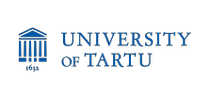Mark Thomas
@mt_genes
Professor of Evolutionary Genetics Research Department of Genetics, Evolution and Environment University College London
Great PhD opportunity at the Estonian Biocentre, University of Tartu; Title: "Elucidating the fine-scale demographic history of the Eastern Baltic by incorporating haplotype-based analyses and modelling"; See: estonia.dreamapply.com/en_GB/courses/…

I have a 2 year postdoc position available on our 'COREX: from correlations to explanations' grant: cordis.europa.eu/project/id/951…. See: ucl.ac.uk/work-at-ucl/se…... working at the intersection of archaeology, computational modelling and stats. Starts Nov 2025.

However, from the Early Iron Age until the Middle Ages, the appearance of eastern nomads in the region became a regular occurrence. Their genetic composition varied from steppe ancestry mixed with the local background to mostly East Asian ancestry with minimal local intermixing.
The analyses show that broad-scale ancestry proportions characteristic of present-day European populations have been present in the Ukraine region since the Bronze Age until today.
The North Pontic region, which encompasses present-day Ukraine, was for centuries a crossroads of migration from multiple directions, connecting the vast Eurasian Steppe with Central Europe.
The study was made possible by the resilience of Ukrainian researchers – second author Olga Utevska from V. N. Karazin Kharkiv National University and MSCA4Ukraine fellow at @genomicstartu, and numerous archaeologists conducting excavations in Ukraine despite the war.
The paper: science.org/doi/10.1126/sc… Photo caption: Scythian burial in Skorobir necropolis in Bilsk hillfort Photo credit: Iryna Shramko
Migration and population mixing will have contributed to the high genetic diversity in geographically, culturally and socially homogeneous groups, with different genetic profiles present at the same site, the same time and among individuals with the same archaeological context.
At the same time, the rest of modern-day Ukraine was inhabited by people with both local Eastern European and Western and Southern European genetic heritage. These diverse origins can be linked to migrations and connections found in archaeological and/or historical records.
Very happy to share the results of my @MSCActions project done at @UGI_at_UCL with @mt_genes and @pontus_skoglund from @TheCrick. We used ancient DNA to reveal remarkably high genetic diversity in the region of modern-day @Ukraine over the last 3,500 years until ~500 years ago.
This is now published in Scientific Data: nature.com/articles/s4159…. The survey is expanded to 42 studies, and the paper now includes a Box 1: "Step-by-step best practices for archiving ancient genomics data in the European Nucleotide Archive (ENA)." I hope this will prove useful!
In this preprint, I survey data archiving in ancient genomics—I find widespread shortcomings, which hinder reproducibility and data reuse. I argue that we need to step up our collective archiving game in #aDNA genomics, with six practical recommendations: biorxiv.org/content/10.110…
Portrayal of character in Steve Coogan’s film The Lost King is defamatory, judge rules 👇 theguardian.com/uk-news/articl…
The train journey to the venue is when the work is done.
Stop it
Yesterday, we published our paper on genetic analyses of early Celtic princely burials from Southwestern Germany today. An important piece of @JoGretzing’s award-winning PhD thesis, we explore kinship and ancestry from the late Hallstatt-Culture. 1/10
Using aDNA and isotopic data from 31 individuals, @JoGretzing, @stschiff et al. find evidence for a dynastic system of matrilineal inheritance among the Celtic society of southern Germany. nature.com/articles/s4156…
Post doc job alert: join my research group to work on the @LeverhulmeTrust funded @palaeothaw project. Get in touch if you have questions #stableisotopes #palaeoecology #permafrost #archaeology jobs.ac.uk/job/DHW422/res…
I have a 2 year postdoc position available on our 'Sustain: Sustainability of Agriculture in Neolithic Europe' grant: sustain-erc.org. See: ucl.ac.uk/work-at-ucl/se…... working at the intersection of archaeology, computational modelling and stats. Starts Nov 2024.

We have a postdoc position in Human Population Genetics available at the Center for the Human Past (@HumanPastCenter). More info and application available here: jobb.uu.se/details/?posit…
I have a funded PhD position available on our 'COREX: From correlations to explanations: towards a new European prehistory' grant: findaphd.com/phds/project/f… ... working at the intersection of archaeology, ancient DNA, computational modelling and stats. Come join us!

Great news! 🥳 Led by the amazing @MatejaHajdi, a new Max Planck Research Group for Hominin Palaeogenomics started @MPI_EVA_Leipzig. 😊😍 Using cutting-edge #aDNA methods, its goal is to shed light on past encounters between hominin groups. @maxplanckpress eva.mpg.de/press/news/art…
Last week, we released our preprint on Poseidon, which seeks to make archaeogenetic data more Findable, Accessible, Interoperable and Reproducible, by defining a data package standard, software tools and public repositories and cloud infrastructure 1/12
Poseidon - A framework for archaeogenetic human genotype data management biorxiv.org/cgi/content/sh… #biorxiv_genetic